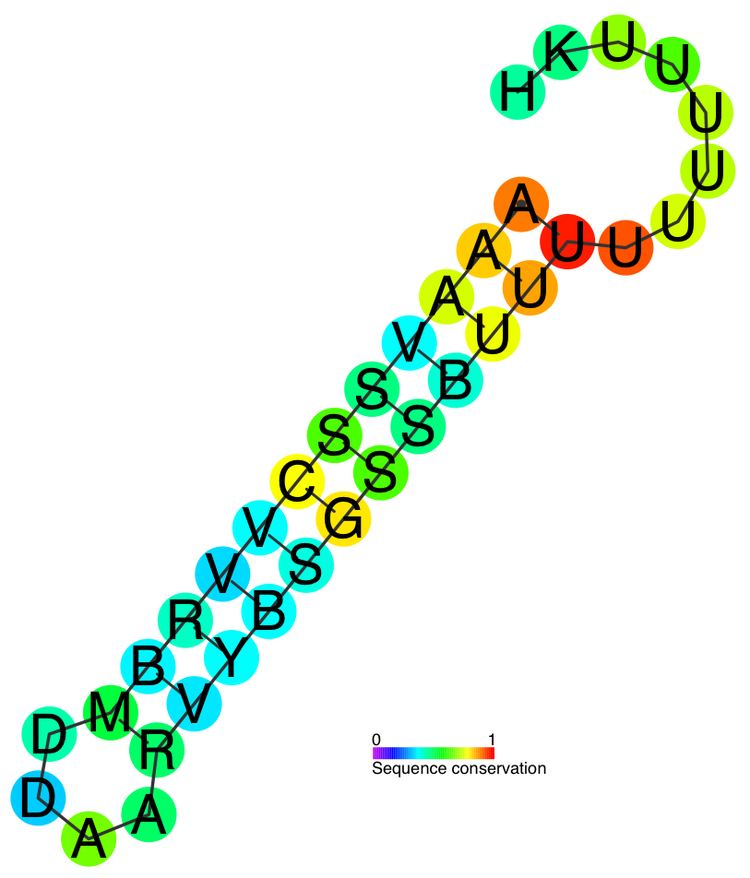 | ||
Intrinsic termination (also called Rho-independent termination) is a mechanism in prokaryotes that causes RNA transcription to stop and release the newly made RNA. In this mechanism, the mRNA contains a sequence that can base pair with itself to form a stem-loop structure 7-20 base pairs in length that is also rich in cytosine-guanine base pairs. C-G base pairs have significant base-stacking interactions (especially repeated G-C pairs) and can form three hydrogen bonds between each other, resulting in a stable RNA duplex. Following the stem-loop structure is a chain of uracil residues. The bonds between uracil and adenine are very weak. A protein bound to RNA polymerase (nusA) binds to the stem-loop structure tightly enough to cause the polymerase to temporarily stall. This pausing of the polymerase coincides with transcription of the poly-uracil sequence. The weak Adenine-Uracil bonds lower the energy of destabilization for the RNA-DNA duplex, allowing it to unwind and dissociate from the RNA polymerase.
Stem-loop structures that are not followed by a poly-Uracil sequence cause the RNA polymerase to pause, but it will typically continue transcription after a brief time because the duplex is too stable to unwind far enough to cause termination.
Rho-independent transcription termination is a frequent mechanism underlying the activity of cis-acting RNA regulatory elements, such as riboswitches.
